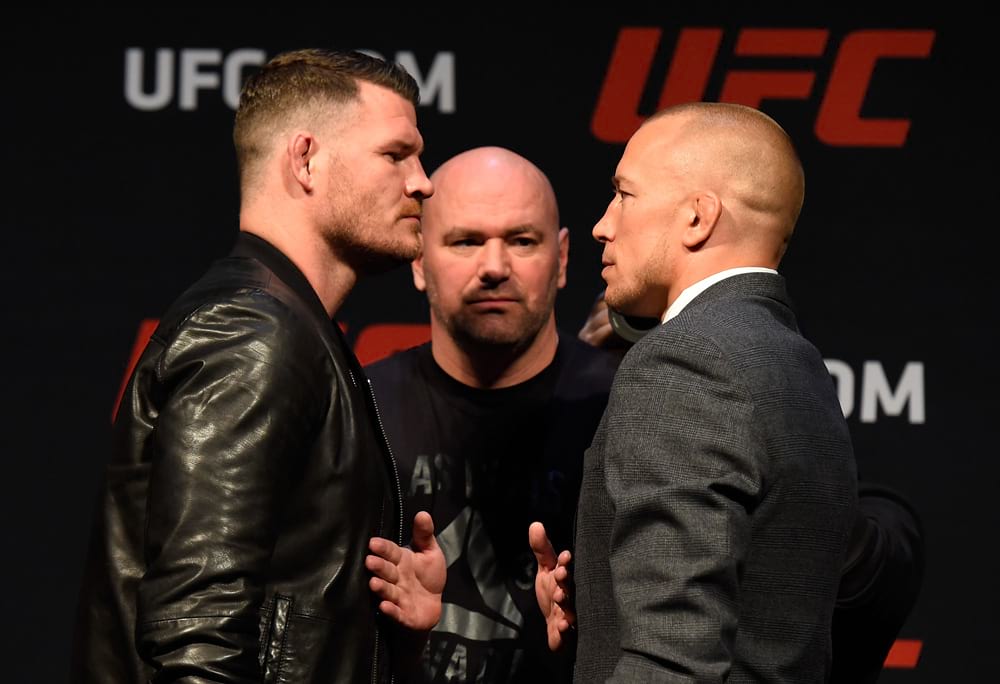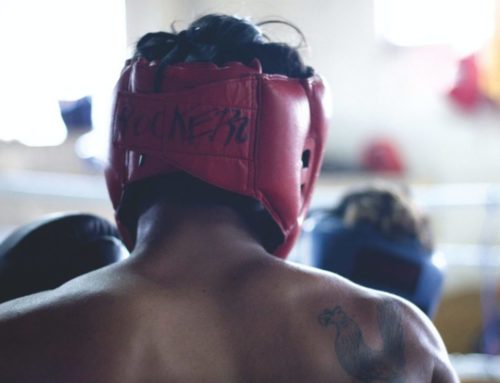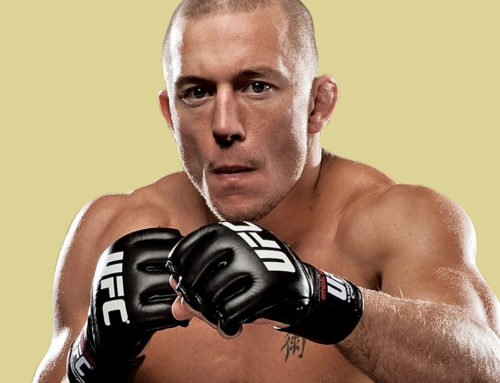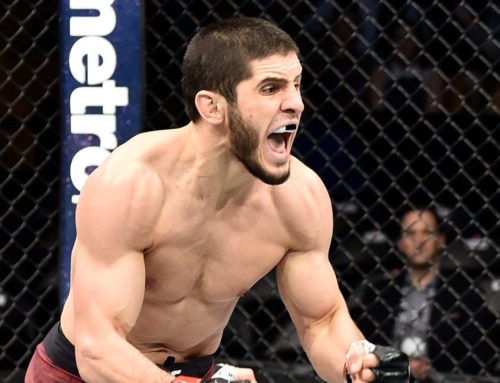There was a time, somewhere between 2007 and 2013, when Georges St-Pierre could seemingly do no wrong. He was perfection in a cage; perfection in tight trunks. In defense of his UFC welterweight title, he’d briefly stalk the opposition, shoot for a takedown, lift them off their feet as if carrying a child to safety, and then proceed to rattle through any number of ground positions in order to keep them there, control them, wear them out and break them – their faces, their bodies, their will.
During this period, which appeared to go on and on, there was no stopping him. If GSP wanted to take you down, you were going down. If he wanted to put you in certain positions, that’s where you were ending up. No questions asked. His fights weren’t even close; rounds weren’t even close. So one-sided, in fact, were the majority of his performances, the one knock against the French-Canadian was that he didn’t capitalize on this dominance in the form of more finishes. It was a valid one, too.
Finishing fights the GSP way meant beating up the opponent over and over and over again for 25 minutes before a unanimous decision, often littered with 10-8 rounds, was rendered, in St-Pierre’s favor, by three judges. Rinse, repeat. Some admired it, others were bored by it.
Whatever your viewpoint, looking back now, it was always less of a fight and more of a lesson. His opponents, the likes of BJ Penn, Nick Diaz, Carlos Condit, Dan Hardy, Josh Koscheck and Matt Hughes, were humbled, defeated, but somehow all the better for the experience. Taken to school, they went away and made notes. They brushed up on areas of deficiency and tried to get better.
As for St-Pierre, it’s been four years since we last saw him compete in MMA and, during this time, the sport has certainly moved on, its landscape having shifted. The fighters, too, are a different, tougher breed now: all-rounders, men just as comfortable grappling as they are striking, and vice versa, currently dominate the sport. Tyron Woodley, for example, an elite-level wrestler with unparalleled athleticism and dynamite in his fists, is the welterweight champion, the man sat cosily in St-Pierre’s old throne.
It’s perhaps why GSP, four years since his last fight, returns not as a welterweight but a middleweight, and perhaps why he has targeted Michael Bisping, the reigning UFC middleweight champion, on November 4 at Madison Square Garden, rather than ‘The Chosen One’. His legacy, after all, is secure at welterweight; with little room for growth or improvement, a return to 170lbs could be viewed as being on a hiding to nothing. St-Pierre, the master tactician, knows this, just as we know this.
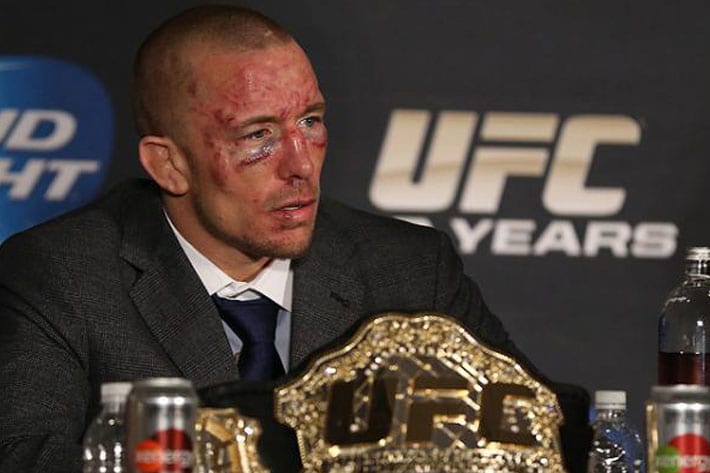
“I don’t really have something to prove,” says GSP. “I do it because I want to live my life to the fullest. Why would I not want to come back and fight Michael Bisping for the title in Madison Square Garden, this mythical place? I would be a fool to not take this opportunity. A lot of people will want to be in my shoes and they are not. And I have an opportunity, something I’m going to do. I’m going to have the memory that I’m going to cherish for the rest of my life. Just think about it. I think I’m very privileged to be in this position. I do it to live my life. That’s why I do it. And I’m going to make history.”
All the talk, of course, is of mythical places and opportunity and history. And much of that is true. But the greater truth is this: Georges St-Pierre feels he can take Michael Bisping down at will and dominate him for five rounds, thus taking his UFC title and making some sort of history in the process. He’s taking the fight for no other reason. At 5’9, he’s not a natural middleweight. Not even close. Stood face-to-face with Bisping he appears almost a forehead shorter, and training photos have revealed a softer, fuller GSP than the one we grew accustomed to seeing during his welterweight reign of terror.
“I could go back to welterweight,” he admits, “but it took me a long time to prepare myself to get this fight at 185. It took me a few months to have muscle mass on me, because even for welterweight, I was a small welterweight. The new guys now, they’re very big. So, I did it and it took a few months. It took a lot of discipline and I made it. But I’m very happy. The weight difference will be there, but it won’t be that much and it’t not going to make an issue.
“Actually, I feel more powerful than ever. I feel I have more muscle and I’m leaner. I eat way more healthy than before and it makes a big difference. I never ate like this before. I never had a program. I was always eating whenever I wanted and it changed my body a little bit. It made me feel better inside. You wake up way better and sleep better. It’s all good.”
Bisping disagrees. He knows all about weight difference and knows all about being the bigger, stronger man. Size, combined with unmatched stamina resources, has made Bisping a difficult proposition, if perhaps not a terrifying one, for many of the world’s middleweights. Before that, before he became the scourge of the 185lb division, Bisping was competing against light-heavyweights on an even keel, which is to say he’s not any old middleweight. He’s a huge middleweight. A physically imposing, determined, experienced middleweight, with energy to burn. The kind of middleweight, on paper, no welterweight (a “small welterweight”, remember) ideally wants to go up against – for a possible five rounds – following a four-year layoff.
“Georges should have stayed retired and he would have forever been a legend,” Bisping said. “But he didn’t. He f****d it up. He’s come out of retirement and fallen into the trap everyone falls into. He thinks he can beat me. He looks at me on TV and goes, ‘Oh yeah, he’s an easy fight. I’ll come out of retirement. I’ll beat the middleweight champion and be a legend.’ He’s fallen into that trap.”
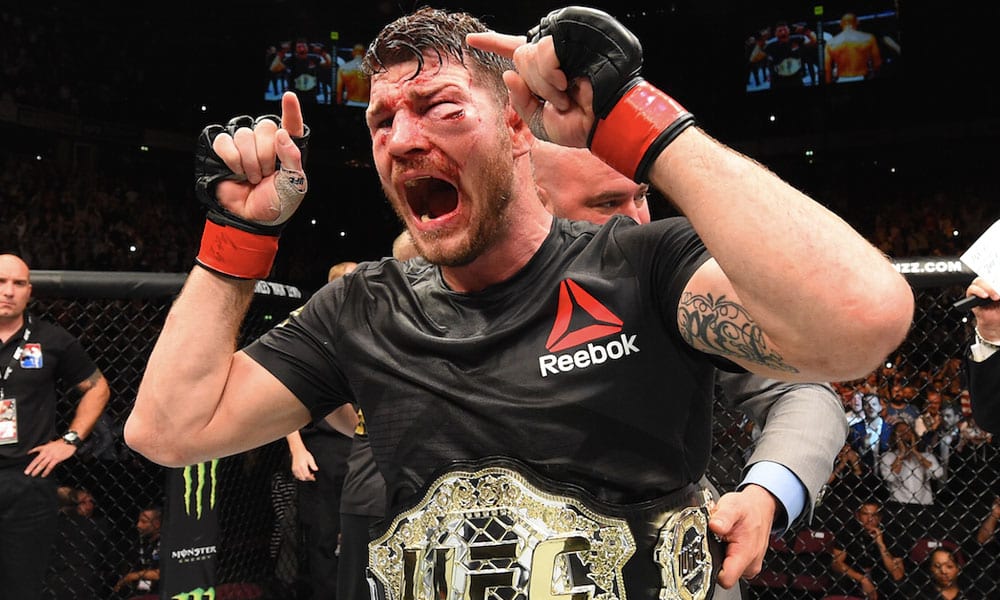
Bisping might be playing a good game of convincing the world he’s fearless, that he holds no concern for St-Pierre’s superior wrestling ability. It could all be a front and the truth, the thing that MMA has a knack of exposing, may well become clear to us all on Saturday night. But, then again, it’s historically proven fighters, most fighters, grow as champions. The belt elevates them. They stand taller. They say what’s on their mind. They relax. Bisping, an obvious continuation of this theme, and a man of 27 UFC appearances, has probably never been as dangerous as he is now, at 40, with a strap around his waist.
“I’ll guarantee you, I see more aggression out of my wife when we’re Christmas shopping than what we’ll see out of Georges at Madison Square Garden,” he said. “He’s going to fight the way he always fights. He’s saying he’s reinvented the wheel and he’s going to do something different, but here’s the facts, and Georges knows this: When you’re under pressure, you fight the way you fight. You go back to your comfort zone. You go back to the things you like to do. And he’s going to look to take me down. That’s within the skill-set. That’s within the rules. It is mixed martial arts. It’s not a boxing contest. He’s not kickboxing. So, God bless him. Try it. Good luck. I’ll be ready.
“Most of the people he’s beaten are lightweights or featherweights; add in a couple of solid welterweights like Carlos Condit. But he hasn’t fought anyone with my size, anyone with my well-roundedness. Jake Shields, straight-up grappler, Carlos Condit, straight-up striker. Nick Diaz, he’s got no wrestling whatsoever, so he couldn’t stop the takedowns. I can stop the takedowns. To say I’m terrified is laughable. It’s hilarious. I didn’t know Georges was such a comedian. We’re going to see Georges wrestle. We all know it.”
The welterweights of yesteryear, the men St-Pierre chucked around like beanbags, also knew he was going to wrestle with them and look to take them down. Didn’t stop him doing it, though, did it? Therein lies the problem for Bisping on Saturday night. It’s not the knowing part he has to master, but the doing part. He has to somehow stop GSP’s advances, make his own size and stamina become a factor in the fight, and induce some panic and anxiety in the former champion. It’s how he wins the fight. It’s the only way he wins the fight.
Make no mistake, Michael Bisping, the champion, has a chance Saturday night. He has a chance because he believes he has a chance and he has a chance because time has passed and Georges St-Pierre, now 36, is no longer perfect. Out of touch by four years, he’s different. The sport is different. Michael Bisping is different. (In 2013, the year that saw GSP last appear in the Octagon, Bisping was head-kicked by Vitor Belfort and knocked out in the second round; a year later he was dominated – outwrestled – for five rounds by Tim Kennedy.)
Bisping has won his previous five fights, and last time out exorcised the demons of that iconic defeat to Dan Henderson in 2009. He’s on a roll, then, buoyed by momentum and a title, and now struts like a man whose points have been proven, whose career goals have been rubber-stamped, and whose questions have all been answered. Which is why you can be sure that when he decides to retire, he’ll likely stay retired, and will do so because he has learnt from the mistakes of others.
“I did say in the build-up that this could be my last fight,” said Bisping. “I’ve done this forever. I’ve been a fighter since I was a kid. I’ve been involved with martial arts and professional combat sports my entire life and I’m almost 40 now.
“You can’t do it forever. I am the champ, so I’ve accomplished what I wanted to accomplish. That said, though, I’ve enjoyed this training camp. I’ve enjoyed the process. I’ve enjoyed being a little bit out of shape and now going to the peak of physical fitness. It’s a great process. It feels good knocking people out in sparring.
“I live for this s***. So, yeah, there will definitely be at least one more fight and, who knows, maybe more after that. I don’t know, though. You’ve got to know when to walk away. Right, Georges? You’ve got to know when to walk away and you should have stayed away. You should have stayed away.”

